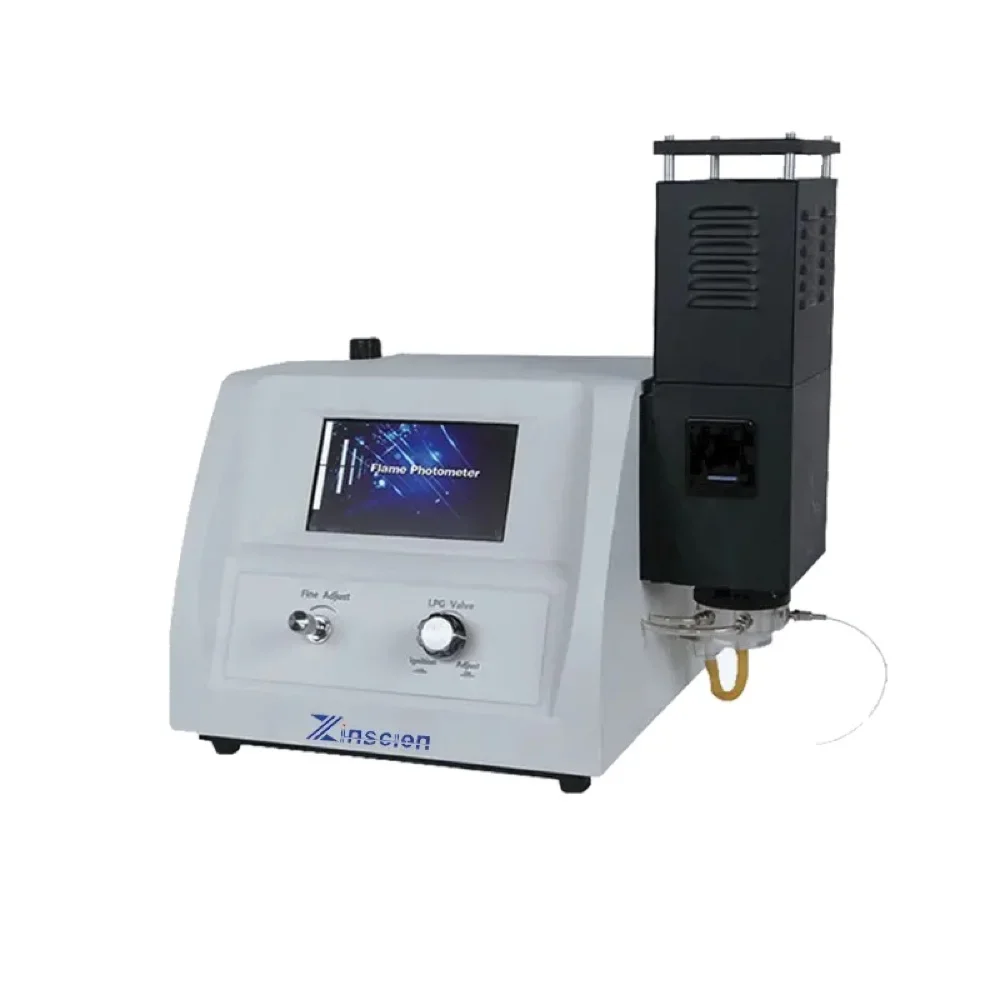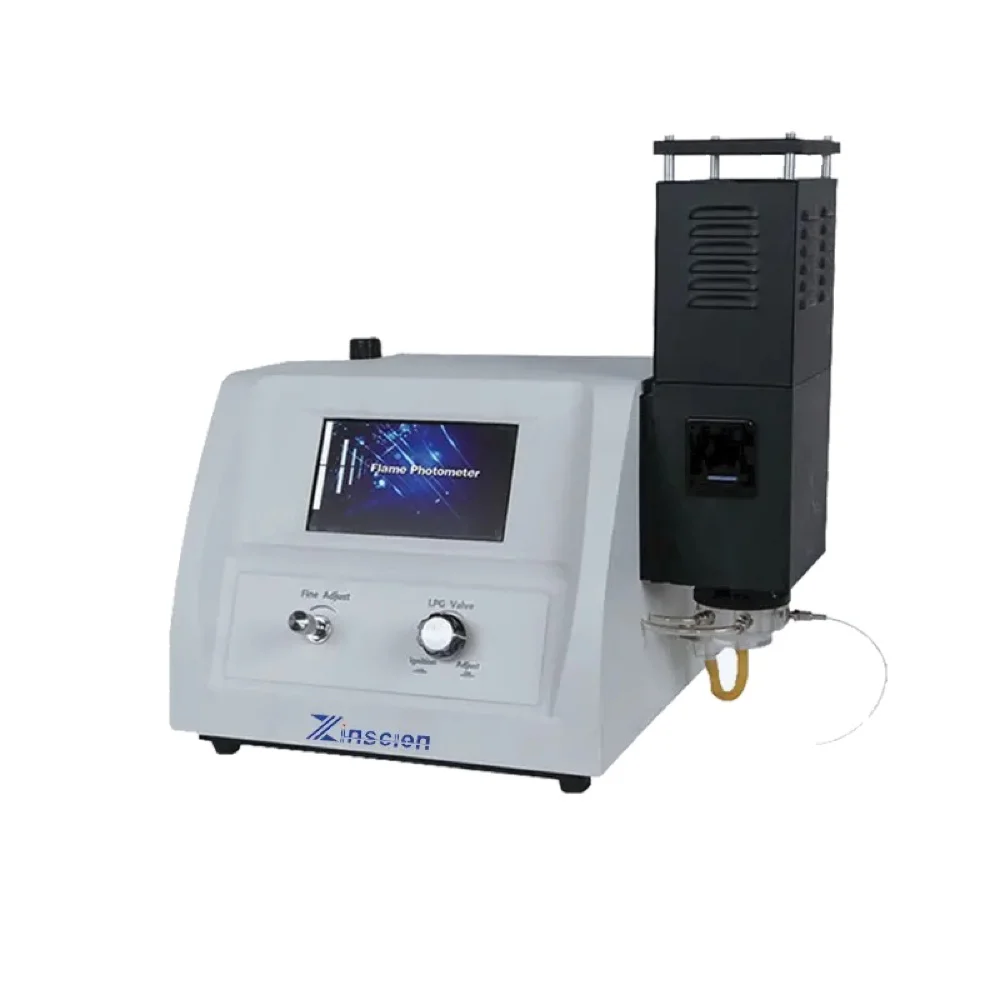In the vast field of modern scientific research, the accuracy of elemental analysis techniques is of paramount importance. With the continuous development of science and technology, flame photometer, as a new analytical tool, has emerged in the field of elemental analysis with its unique advantages. Zinscien Technology's flame photometer provides customers with a full range of technical support and solutions to meet customer needs.

Working principle and structure of flame photometer
A flame photometer is an analytical instrument that uses a flame as an excitation light source to determine the content of the element to be measured by measuring the intensity of atomic emission spectral lines. Its working principle is based on atomic emission spectrometry, that is, when the element to be measured is excited in a flame, it will emit spectral lines of specific frequencies. The intensity of these spectral lines is proportional to the concentration of the element to be measured.
Flame photometer is mainly composed of light source, monochromator, detector and data processing system. Among them, the light source usually uses a special burner to provide a stable flame environment; the monochromator is responsible for separating the spectral lines into a single wavelength; the detector is used to measure the intensity of the spectral lines; the data processing system is responsible for converting the detected signals is the concentration value and outputs the analysis results.
Application of flame photometer in elemental analysis
Flame photometers have a wide range of applications in the field of elemental analysis. It can be used to determine the content of various metal elements and non-metal elements, such as sodium, potassium, calcium, barium, etc. In the fields of environmental monitoring, geological exploration, agricultural production, food processing, medicine and health, flame photometers play an irreplaceable role.
In environmental monitoring, flame photometers can be used to measure the content of heavy metal elements in water, soil and atmosphere, providing scientific basis for the prevention and control of environmental pollution. In geological exploration, flame photometers can be used to analyze the elemental composition of rocks and minerals, providing strong support for the development and utilization of mineral resources. In agricultural production, flame photometers can be used to measure the content of nutrient elements in soil and plants, providing guidance for rational fertilization and increasing crop yields. In the fields of food processing and medicine and health, flame photometers can be used to detect trace element content in food and impurity components in drugs to ensure product quality and safety.
Technical characteristics and advantages of flame photometer
As an advanced elemental analysis instrument, the flame photometer has a variety of technical features and advantages. First, it has high sensitivity and accuracy, enabling precise determination of trace elements. Secondly, the flame photometer is easy to operate and has fast analysis speed, making it suitable for rapid detection of batch samples. In addition, the flame photometer also has good selectivity and stability, can accurately distinguish the spectral lines of different elements, and maintain stable performance over a long period of time.
The flame photometer can pre-select the flame size, which is an important feature of the flame photometer and can help users adjust the flame size according to actual needs to adapt to different measurement needs.
New ways for flame photometer to improve the accuracy of elemental analysis
With the continuous advancement of science and technology, flame photometers are constantly exploring new ways to improve the accuracy of elemental analysis. On the one hand, by optimizing the burner design and flame conditions, the stability and excitation efficiency of the flame can be improved, thereby further improving the accuracy of the analysis results. On the other hand, combining advanced signal processing technology and data analysis methods can more accurately extract and process spectral signals and reduce noise interference and errors.
In addition, with the development of artificial intelligence and machine learning technology, the application of flame photometers in elemental analysis will become more intelligent and automated. By building a prediction model based on big data and machine learning algorithms, rapid identification and accurate analysis of unknown samples can be achieved. This will greatly improve the efficiency and accuracy of elemental analysis and provide strong support for scientific research and practical applications.
Conclusion
As a new type of elemental analysis instrument, flame photometer plays an important role in improving the accuracy of elemental analysis. By continuously optimizing technology, expanding application fields, and combining advanced data processing methods, Zinscien Technology flame photometers will provide more accurate, fast and convenient elemental analysis solutions for scientific research and practical applications in the future. At the same time, we also expect that with the continuous advancement and innovation of technology, flame photometers will demonstrate their unique advantages and value in more fields.








